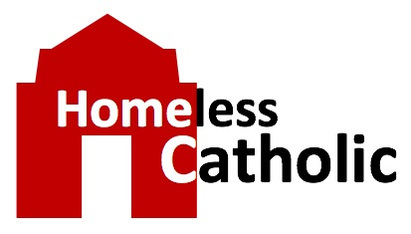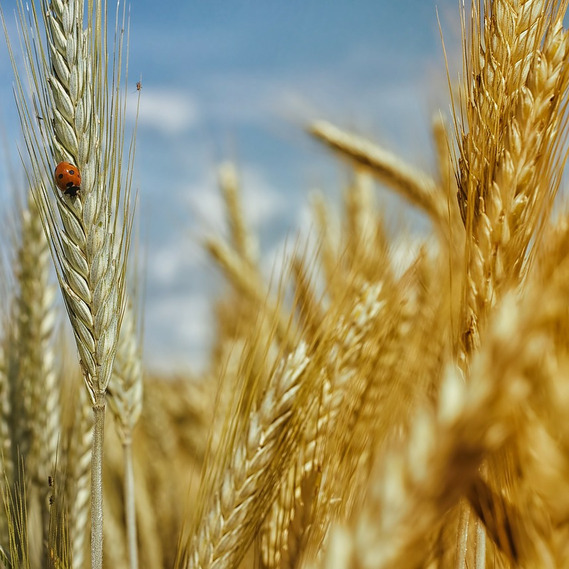Speaking in Parables
In today’s gospel, Jesus presents that Parable of the Weeds. Why does He use parables? And what exactly is a parable? And should I try to figure out the meaning of today’s parable?
Image by Ralf Kunze
The Parable of the Weeds
By Steve Leininger
https://bible.usccb.org/bible/readings/072421.cfm
Exodus 24:3-8
Matthew 13:24-30
Today’s gospel reading is from Chapter 13 of the Gospel of Matthew. It is variously referred to as The Parable of the Tares, The Parable of the Weeds Among the Wheat, or simply The Parable of the Weeds. My mind overloads a bit as I ponder where to focus my reflection. The list of possible discussion points might include:
- What is a parable?
- Parables in the gospels
- Why Jesus uses parables
- Details specific to this particular parable
- The underlying meaning of today’s parable
Let’s start by re-reading Matthew 13:24-30.
Jesus proposed a parable to the crowds.
“The Kingdom of heaven may be likened to a man
who sowed good seed in his field.
While everyone was asleep his enemy came
and sowed weeds all through the wheat, and then went off.
When the crop grew and bore fruit, the weeds appeared as well.
The slaves of the householder came to him and said,
‘Master, did you not sow good seed in your field?
Where have the weeds come from?’
He answered, ‘An enemy has done this.’
His slaves said to him, ‘Do you want us to go and pull them up?’
He replied, ‘No, if you pull up the weeds
you might uproot the wheat along with them.
Let them grow together until harvest;
then at harvest time I will say to the harvesters,
“First collect the weeds and tie them in bundles for burning;
but gather the wheat into my barn.”’” [Matthew 13:24-30]
What is a parable?
The reading begins with “Jesus proposed a parable to the crowds.” This reading could be used as a good example of a parable. Wikipedia defines a parable as “a succinct, didactic story, in prose or verse, that illustrates one or more instructive lessons or principles. It differs from a fable in that fables employ animals, plants, inanimate objects, or forces of nature as characters, whereas parables have human characters.” I think they lost me at didactic but made up for it a bit with the comparison to fables. A simpler definition from newadvent.org says “the word parable signifies in general a comparison, or a parallel, by which one thing is used to illustrate another. It is a likeness taken from the sphere of real, or sensible, or earthly incidents, in order to convey an ideal, or spiritual, or heavenly meaning.” I like that explanation a little better.
Parables in the gospels
Jesus uses the parable as a tool for presenting guidance and teaching as recorded in the synoptic gospels of Matthew, Mark, and Luke. In many cases, like the Parable of the Sower (you know, seeds falling on rocky ground, among the thistles, and on good soil) is in all three books. It is generally agreed that there are 30-some-odd parables in the gospels, including such favorites as the Good Samaritan, the Prodigal Son, the Mustard Seed, and the Lost Sheep. Do any of these sound familiar?
Today’s parable is unique to Matthew, but it is one of seven parables recorded in Chapter 13 of Matthew.
Why Jesus uses parables
I initially thought there would be some challenges in determining WHY Jesus used parables. The answer, it turns out, is right there in the same chapter.
The disciples approached him and said, “Why do you speak to them in parables?”
He said to them in reply, “Because knowledge of the mysteries of the kingdom of heaven has been granted to you, but to them it has not been granted.
To anyone who has, more will be given and he will grow rich; from anyone who has not, even what he has will be taken away.
This is why I speak to them in parables, because ‘they look but do not see and hear but do not listen or understand.’ [Matthew 13:10-13]
There is some scholarly disagreement on what exactly this explanation means. Some believe that because Jesus often preached to a mixed audience of believers and non-believers, he used parables to reveal the truth to some, but hide it from others. Others proclaim that the parables of Jesus use familiar examples to lead men's minds towards heavenly concepts. Some state that the parables were meant to be instructive to his disciples but have their spiritual meaning hidden from those who “hear but do not understand.”
Details specific to this particular parable
In our reading, we are told about weeds being sown into the wheat field. Many interpretations refer to the weeds as “tares”, also known as darnel or bearded darnel. The specifics of this story would have made a lot more sense to Jesus' original audience. When one farmer wanted to sabotage another, it wasn't unheard of for them to sow bearded darnel into their wheat.
Bearded darnel is a noxious weed that mimics many of the characteristics of wheat—for a while. Before they mature, the two plants are almost identical, but as they grow, the differences become apparent in the fruit. Unfortunately, darnel is poisonous and in big enough doses will kill a person. The problem was so serious that Roman law prohibited sowing darnel among the wheat of an enemy.
The underlying meaning of today’s parable
Attempting to understand and explain the meaning of the Parable of the Weeds would have been my normal “go-to” for this reflection. Looking for context, I read Matthew 13 from the beginning of the chapter, and found the following sections:
- The Parable of the Sower
- The Purpose of Parables
- The Privilege of Discipleship
- The Explanation of the Parable of the Sower
- The Parable of the Weeds Among the Wheat
- The Parable of the Mustard Seed
- The Parable of the Yeast
- The Use of Parables
- The Explanation of the Parable of the Weeds
- More Parables
- Treasures New and Old
- The Rejection at Nazareth
It looks like I’m in luck!! There is an explanation of the Parable of the Weeds in Jesus’ own words:
Then, dismissing the crowds, he went into the house. His disciples approached him and said, “Explain to us the parable of the weeds in the field.”
He said in reply, “He who sows good seed is the Son of Man,
the field is the world, the good seed the children of the kingdom. The weeds are the children of the evil one,
and the enemy who sows them is the devil. The harvest is the end of the age, and the harvesters are angels.
Just as weeds are collected and burned [up] with fire, so will it be at the end of the age.
The Son of Man will send his angels, and they will collect out of his kingdom all who cause others to sin and all evildoers.
They will throw them into the fiery furnace, where there will be wailing and grinding of teeth.
Then the righteous will shine like the sun in the kingdom of their Father. Whoever has ears ought to hear. [Matthew 13:36-43]
I certainly know that I can not improve on the explanation Jesus has offered. But I am glad that I went down the parable rabbit hole and learned more about parables in general, and particularly about the “tares” or weeds. Who can judge another’s heart as they grow and mature as a human? Just like the wheat and the tares, leave the judgement (weeding of the garden) to God.
Thank you for joining me on my journey!

